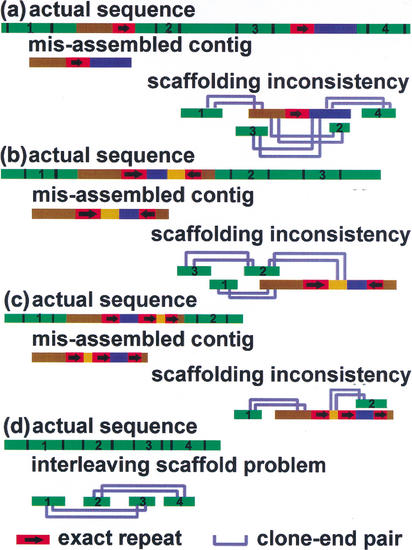Figure 3.
Common contig misassemblies, and how they may be detected during scaffold construction. There are three common problems: missing segment as a result of two repeats in the same direction (a), segment orientation error due to inverted repeats in opposite direction (b), and segment ordering mixed up as a result of three repeats all in the same direction (c). A consistent scaffold is a unidirectional path that puts the contigs in a definite order. It will not turn around and suggest that different contigs should be put in the same place. However, this is precisely what happens if the scaffold is forced to use a misassembled contig. A different scaffolding problem is depicted in d. When the clone-insert sizes are too large, the scaffolds start skipping contigs, leading to an interleaving morass of scaffolds with no obvious relation between overlapping scaffolds.

